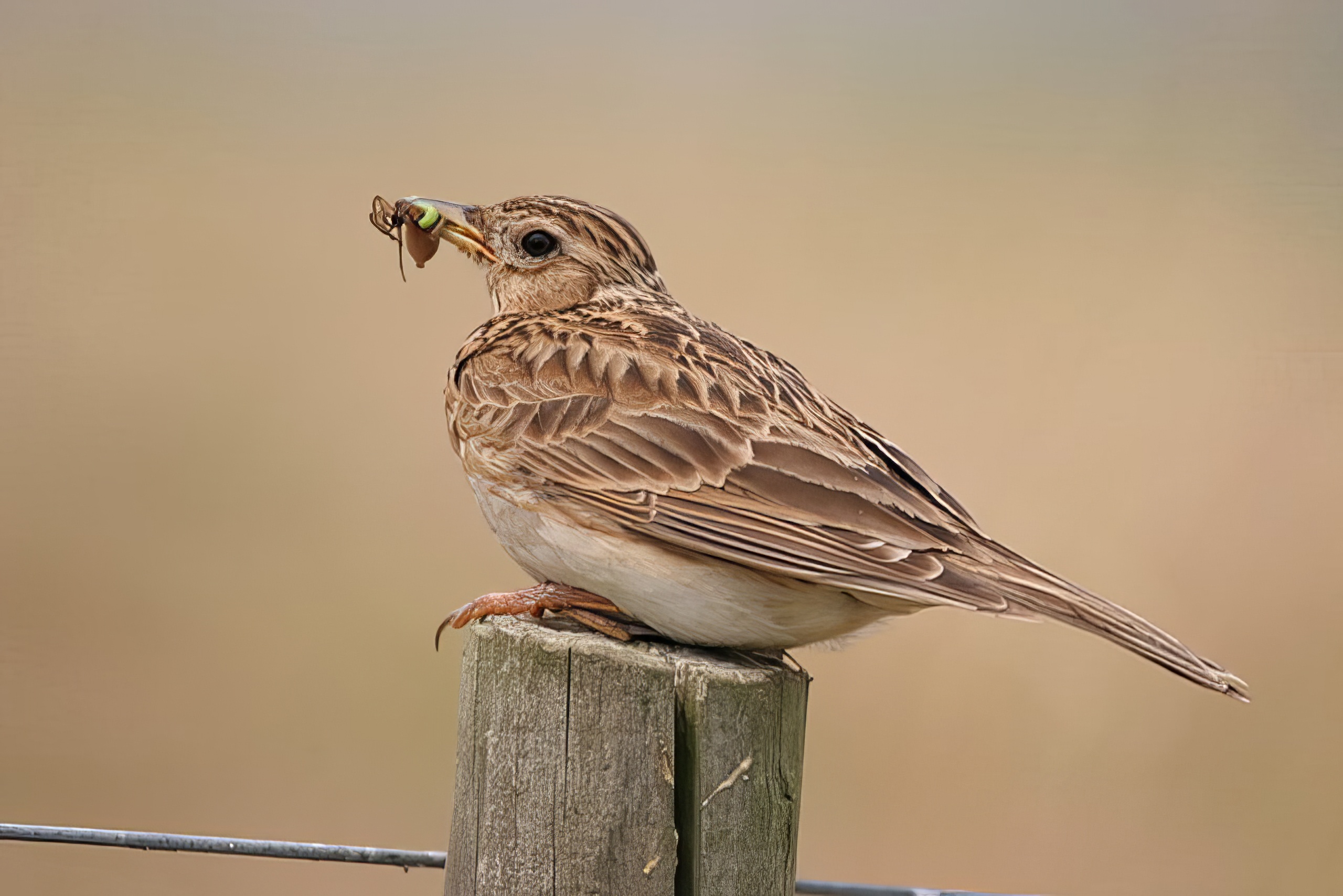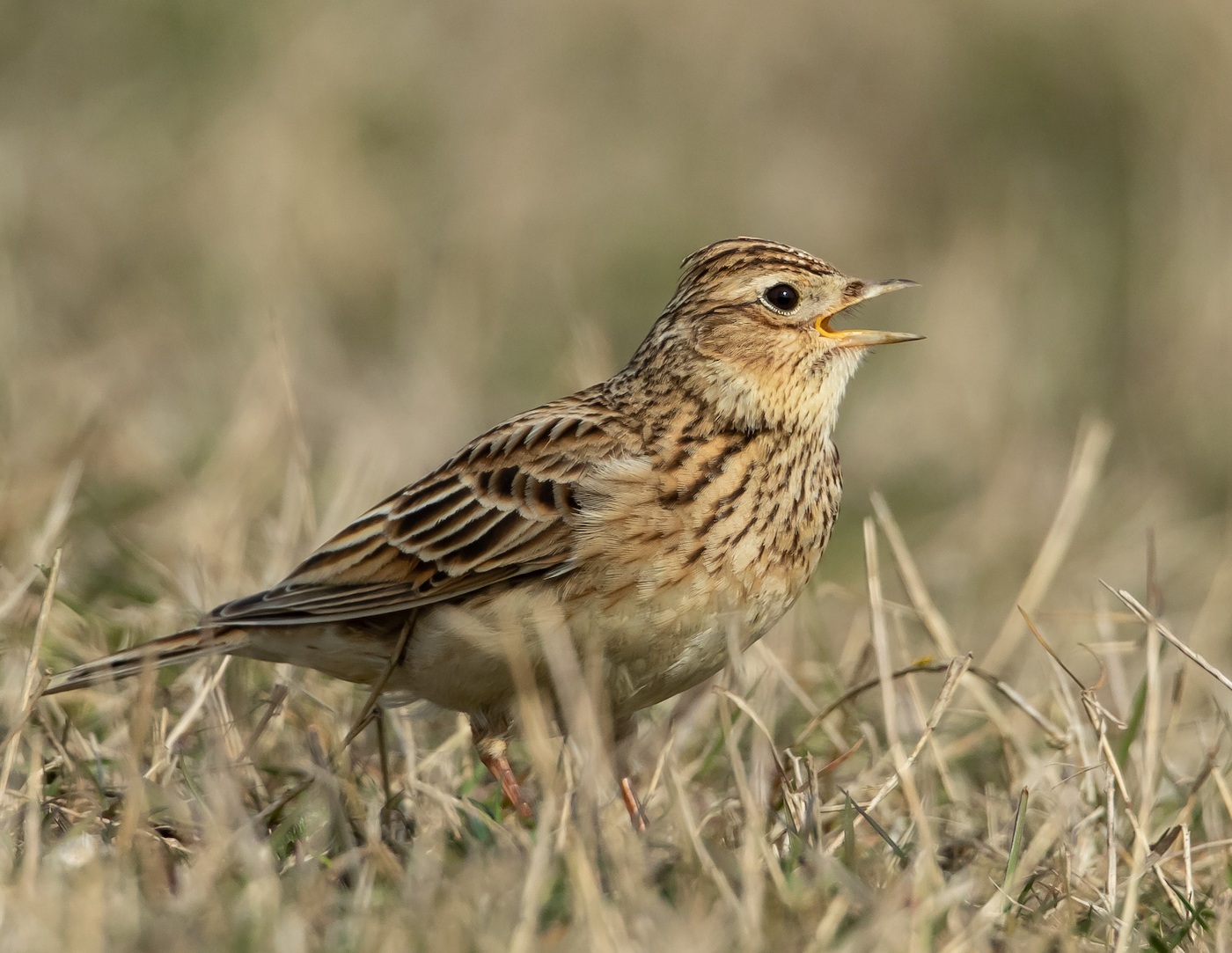Skylark Alauda arvensis
Very common resident, passage migrant and winter visitor. Breeding numbers have declined in recent years.


Skylarks at Kelsey Moor, left, on July 6th 2006 (Dean Eades) and at Frampton Marsh, right, on April 19th 2019 (Mark Johnson).
The quintessential farmland bird in Lincolnshire remains very widespread throughout the county. The Atlas estimated 76,000 pairs in the late 1980s but there was a suspicion numbers had fallen by 25-50% by the late 1990s. The Lincs BBS index chart reflects that but there have been subsequent increases, losses and a recent increase which leaves the population down some 14% over the long term since 1994. That compares reasonably well to the overall position in England where Skylark is down 24%. Looking back a bit further the population had already fallen by more than half from the late 1970s/ early 1980s onwards. The adjusted APEP4 population estimate in 2016 is 70,000 pairs which ties in well with the Atlas estimate and the BBS index. Four figure counts in the winter Atlas in the 1980s were in the range 1,000-4,250. Such wintering flocks are not reported these days. In the five years 2014-2018 the largest wintering flock reported in LBR was at Frampton Marsh which had 700 in February 2017. The average peak flock was 440. Migration can still throw up big flocks occasionally. In the five years 2014-2018 there was one such big movement in October 2014 at Gibraltar Point when on two separate days numbers heading south totalled 1,765 on 11th and 1,600 on 25th.
Scottish-ringed Skylarks have been recovered (dead) in the county and in February 1989 two birds colour-ringed on The Wash in November 1986 were seen alive on Fair Isle. There are apparently no records of foreign-ringed birds being seen or found in the county.
(Account as per new Birds of Lincolnshire (2021), included October 2022)
